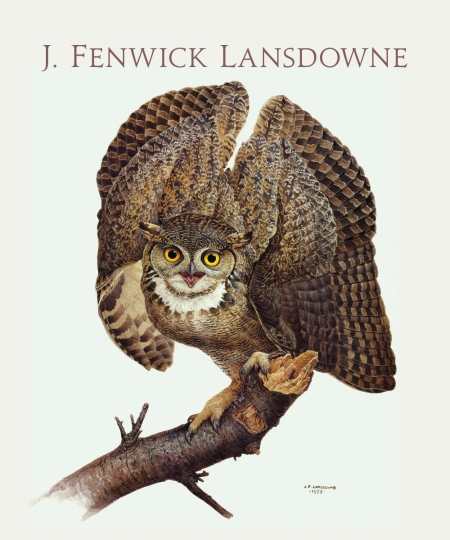
J. Fenwick Lansdowne
- 2014 INDIES Finalist
- Finalist, Art (Adult Nonfiction)
Essayists muse about J. Fenwick Lansdowne’s career as a nature artist in this vibrant and intimate look at his life and works.
Vibrant images fill this tribute to Canadian avian artist J. Fenwick Lansdowne (1937-2008). Born in Hong Kong and stricken by polio, Lansdowne came to Victoria, British Columbia, with his mother, while his father remained in the East, interned by the Japanese during World War II. Lansdowne’s mother, an artist who specialized in painted ceramic birds, encouraged his artistic activities. He began drawing in his teens and dropped out of high school. Then, at nineteen, Lansdowne had his first exhibition at the Royal British Columbia Provincial Museum and garnered critical acclaim, which was remarkable, considering his age and lack of formal training in drawing and painting. Early in his career, he received sponsorship from an agent and went on to create several large collections of avian paintings.
The remembrances in this book are several pages long and usually include black-and-white photographs of Lansdowne and the essay writer, followed by full or half-page reproductions of paintings mentioned in the text. The images are sharp and bright, inviting further investigation.
Four contributors describe Lansdowne’s creative process of field observations and, when available, using preserved specimens for studio study. More details on his creative process may not come to light since, as Lansdowne’s son writes, he desired privacy and asked that his correspondence be destroyed.
Robert McCracken Peck, from the Academy of Natural Sciences of Drexel University, writes of other painters by whom Lansdowne was influenced. Peck also compares Lansdowne’s work to that of Audubon (for example, Audubon used assistants in painting and creating lithographs, while Lansdowne’s painting was a solo endeavor). Painter Robert Genn tells of teenage road trips birding through rural Canada and the impressions gathered for Lansdowne’s paintings.
The daughter of Lansdowne’s agent has several boxes of her father’s correspondence and uses excerpts telling of Lansdowne and the agent’s shared love of antique hunting, rare birding books, and curiosities. The quoted passages give just a hint of Lansdowne that perhaps a future book could explore with more depth. We get a taste of his aesthetic in the essay by art consultant Nicolas Tuele, curator of the Rare Birds of China exhibition. Lansdowne had the exhibition walls painted bright red, creating a dazzling effect. Painter and lifelong friend Tony Angell shares several anecdotes of Lansdowne’s sense of humor and provides some quick caricature sketches.
A listing of selected exhibitions, short biographies of essay authors, and an index of illustrations, photographs, and subjects close the book. J. Fenwick Lansdowne is a welcomed overview of the artist’s life and work and will be of great interest to natural-history art enthusiasts and arm-chair birders.
Reviewed by
Mark Laiosa
Disclosure: This article is not an endorsement, but a review. The publisher of this book provided free copies of the book to have their book reviewed by a professional reviewer. No fee was paid by the publisher for this review. Foreword Reviews only recommends books that we love. Foreword Magazine, Inc. is disclosing this in accordance with the Federal Trade Commission’s 16 CFR, Part 255.
